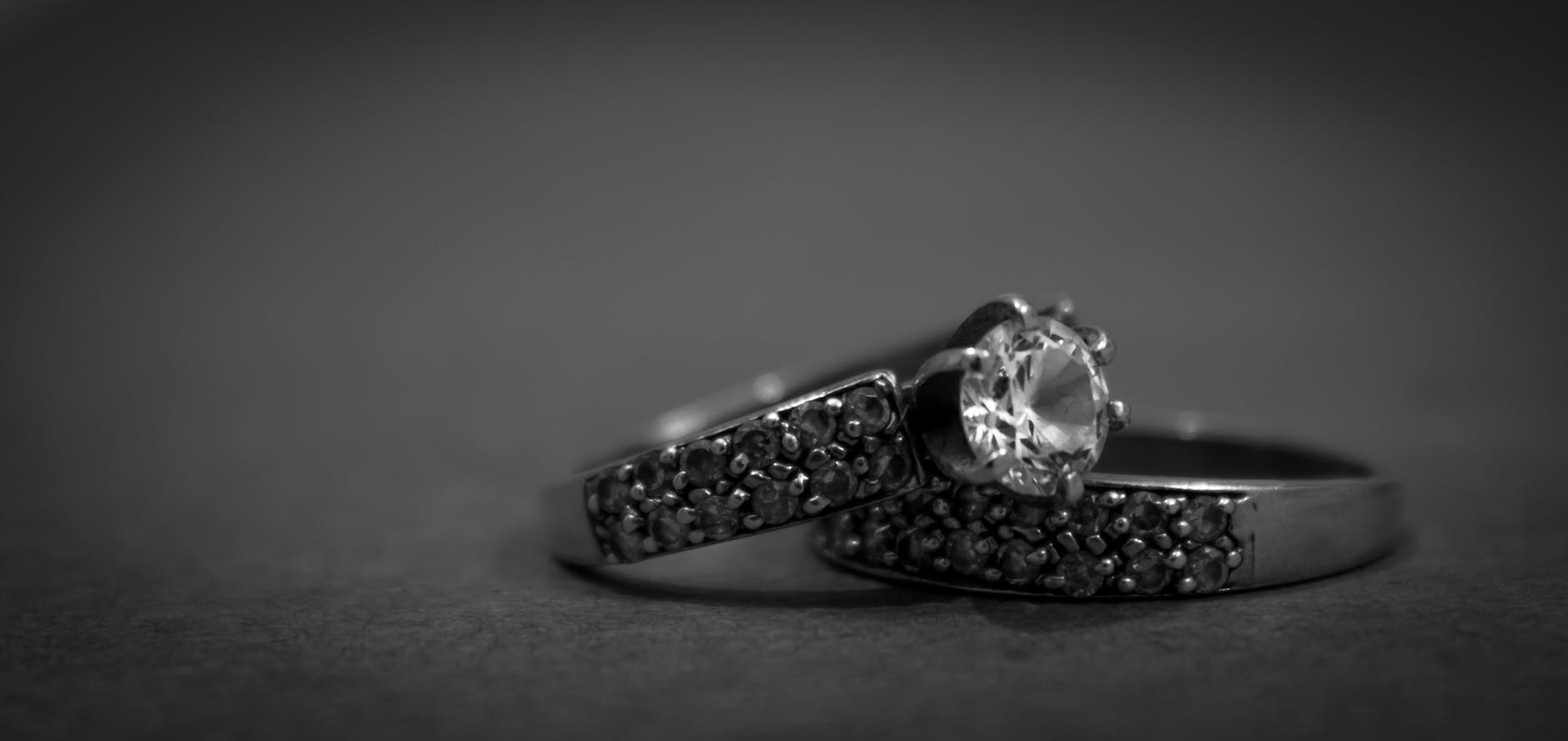
Table of Contents
As Jewelry Shopping Guide editors, we write about things that we love and we think you’ll like too. We often have affiliate partnerships, and may generate some revenue from these links at no cost to you.
SI1 and SI2 clarity diamonds fall in that sweet spot where affordable prices meet acceptable quality. And while this doesn’t sound particularly romantic or prestigious, for anyone looking for a good-looking and budget-friendly diamond, SI1 and SI2 are often the way to go.
Sure, they aren’t as flawless and impressive as VVS diamonds. In fact, if you’re not careful you might even end up with an outright ugly SI2 stone.
However, with a little know-how and a bit of research, you can also find a beautifully-looking SI1 or SI2 stone that will be easy on your wallet too.
SI1 and SI2 Clarity Diamonds – What Are They?
Before we continue tossing abbreviations around, let’s first explain what SI1, SI2, and diamond clarity as a whole even mean.
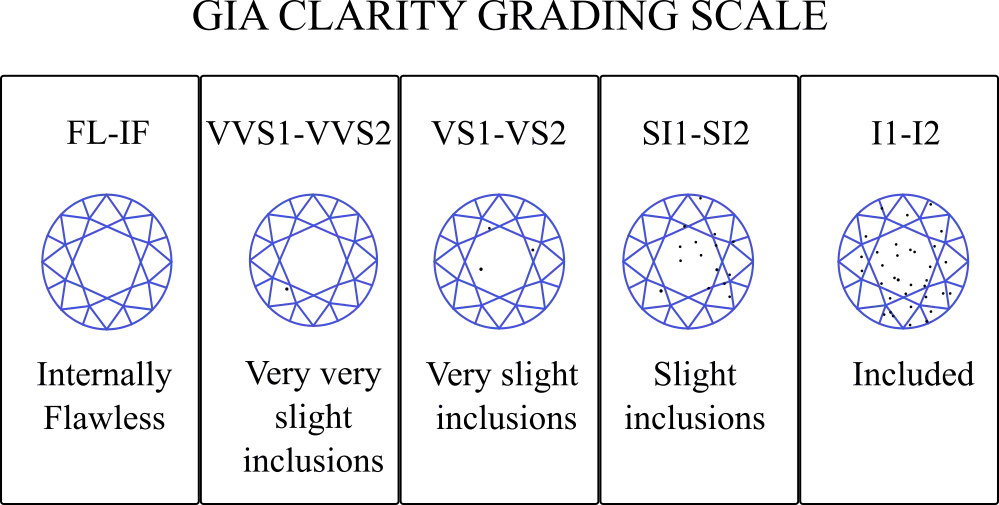
Diamond clarity, one of the four major Cs of the diamond industry, indicates how clear a stone is of any internal imperfections. These imperfections can be various blemishes, grains, spots, and other inclusions that tarnish the otherwise crystal-clear look of the diamond. The fewer and smaller these inclusions are, the higher rated the stone is and vice versa. The basic diamond clarity grading used by most gemological institute are as follows:
- IF (Internally flawless) and FL (Flawless) stones are completely clear.
- VVS1 and VVS2 (Very Very Slightly Included) diamonds that have minor inclusions that are only visible under strong magnification.
- VS1 and VS2 (Very Slightly Included) diamonds have inclusions that are also only visible under magnification.
- SI1 and SI2 (Slightly Included) diamonds have more prevalent inclusions that may or may not be visible to the naked eye. That last part depends mostly on whether the inclusions are coloured and clustered together. This isn’t accounted for in the grading, which means that some SI1 & SI2 diamonds can be clear to the eye, while others are not.
- I1, I2 & I3 (Included) diamonds have visible inclusions.
So, in short, SI1 and SI2 diamonds fall near the bottom of the grading scale, just above the Included grades. SI1 and SI2 stones are ones that are significantly cheaper than VS and VVS diamonds but – when chosen carefully – can still be eye-clean.
And since, for most people, the driving factor of clarity is that the diamond should be eye-clean, this makes SI1 and SI2 the ideal ranges for a budget purchase.
Here is an SI1 diamond from James Allen, viewed via 20x magnification.
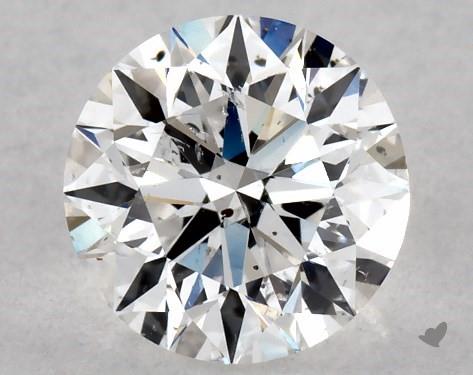
Now see this same diamond in 1x magnification.
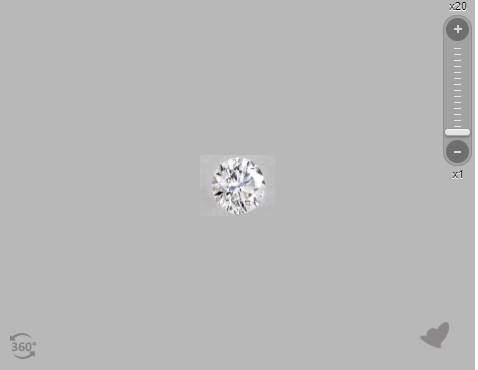
Suddenly, those inclusions that appeared so large and unsightly are not as visible.
What Is the Difference Between SI1 and SI2?
Our quick breakdown above probably makes it clear that an SI1 diamond is considered of a higher quality than an SI2 diamond. However, this doesn’t mean that every SI1 stone is categorically better than an otherwise similar SI2 diamond. As we said, the official clarity grading doesn’t account for the colour of the different inclusions nor does it consider their positions inside the diamond.
Several dark brown inclusions that are clustered together near the centre of the diamond’s table will be visible even if the diamond is of SI1 clarity on paper. On the other hand, several dispersed and colourless inclusions that are situated near the pavilion of the diamond will be invisible to the naked eye even if the diamond is technically of SI2 grading.
Simply put, whatever you buy should pass the eye test, regardless of what the grading report says. The most important factor is that the diamond is eye-clean. SI2 is typically cheaper than SI1, so if you’ve found an eye-clean SI2 stone then there’s little reason to look for a comparable SI1 diamond.
This is why it’s important to see the diamond carefully from all angles and in magnification so that you can clearly notice any imperfections.
SI1 and SI2 – Price Difference
For a few examples of SI1 vs SI2 clarity and price differences, here is an eye-clean 1.00 carat SI1 diamond and here is an eye-clean 1.00 carat SI2 diamond. Both are nearly identical in most ways and both are eye-clean, but the price difference between them is quite noticeable.
Alternatively, here is an SI1 stone with clearly visible inclusions, as well as an SI2 diamond that also isn’t clean when viewed with the naked eye. Regardless of their prices, both of those stones would be considered bad purchases simply because they don’t offer the quality you want from a diamond.
You can generally expect non eye-clean SI1 stones to be less imperfect than non-eye-clean SI2 diamonds as they have fewer inclusions.
But either way, why buy a stone with visible inclusions?
Instead, just look for diamonds that are eye-clean and keep in mind that if they are of an SI2 grade they’ll also generally be cheaper.
SI1 And SI2 Clarity Diamonds and Jewelry – What Do They Fit Best?
So, with all that out of the way, which pieces of jewelry are best suited for an SI1 or SI2 diamond? The main thing to consider is how visible are the inclusions?
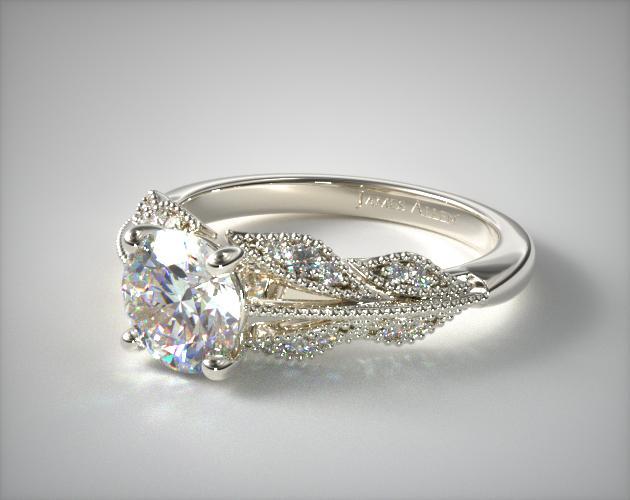
For a center stone for an engagement ring, you would hope for a diamond that doesn’t have unsightly blemishes in the middle of the stone. Centre diamonds on any piece of jewelry, i.e. stones that are meant to capture the eye and hold it, should be eye-clean and devoid of any visible imperfections. Otherwise, what’s the point of having them?
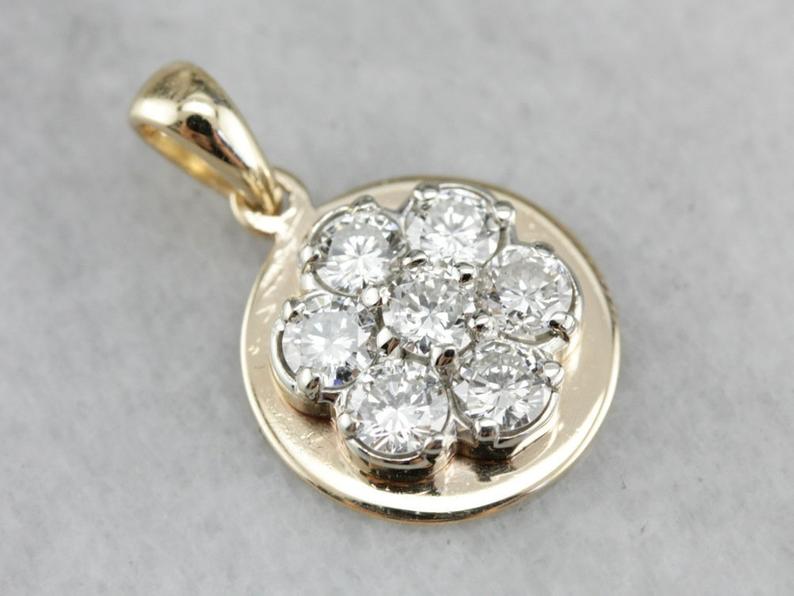
If you do have an SI1 or SI2 diamond that has visible inclusions, that doesn’t mean that you can’t use them at all. Such diamonds can fit well on pendants and studs, especially if the jeweler that is going to mount them is skilled enough to hide their imperfections with the setting of the jewelry.
Shopping Tips for Buying Lower Clarity Engagement Rings
With SI1 and SI2 stones, it’s very important to pay extra attention to the visible properties of the stone. A VVS1 diamond will always be eye-clean, no matter what. An SI2 stone, on the other hand, can range from being eye-clean to being painful to look at.
Another thing to note is that while lab reports will mention the clarity grade, they won’t tell you where the inclusions are located. Take a look at the following screenshot of randomly selected SI2 diamonds. They have similar prices and specifications but notice that some are more acceptable than others. On a lab report, they would all be listed in the same way.
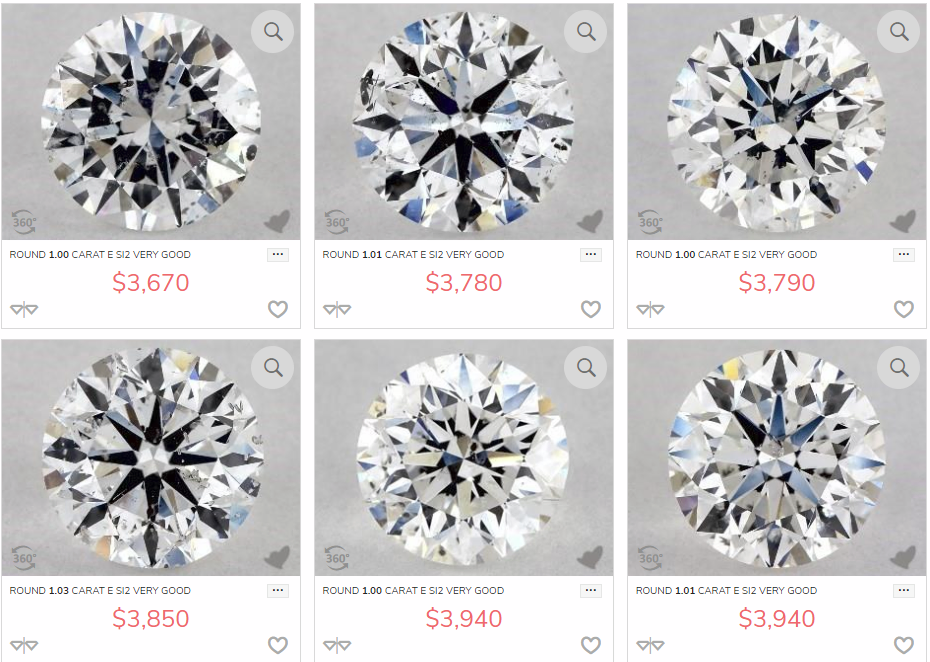
This is why, when shopping, make sure you’re looking at the actual diamond and not a sample image. Reputable vendors offer high-quality HD pictures and 360-degree video displays which allow you to carefully inspect the diamond.
When doing that, don’t forget to also examine the stones at a reduced magnification in addition to viewing it at the standard x20 or x10 view. Observing the stone at just x2 magnification can allow you to more easily determine whether it’s going to be eye-clean in person or not, provided that the image is actually HD.
Also, when choosing a loose SI1 or SI2 diamond for a piece of jewelry, keep in mind that while most imperfections are easily visible when observed from the pavilion side, most jewelry settings actually hide that side of the stone, thus rendering the side visibility of the inclusions irrelevant. When looking for visible inclusions in a stone, focus mostly on the top side and the table as that’s where most diamonds are meant to be viewed from.
Where to Buy Quality SI1 and SI2 Diamonds?
When shopping for these diamonds, it’s important to choose a trustworthy and reliable vendor, known for the quality of their products and services. Look for a retailer with a proven track record.
We recommend the following retailers when it comes to shopping for SI1 and SI2 diamond online:
James Allen
James Allen allows you to view each diamond carefully from all angles using their ground-breaking Diamond Display Technology. They also have Diamond Experts on hand to help you through the process.
Blue Nile
Blue Nile is a giant in the diamond industry, offering the largest online inventory of diamonds at competitive prices. They’re known for their quality and great customer service.
Brian Gavin
Brian Gavin’s diamonds are famous for their cut quality and for their commitment to continuous innovation in perfecting their cut quality. Their Black and Blue Collections feature some of the very best diamonds.
Wrapping Up…
SI1 and SI2 clarity diamonds are not for everybody. If you want a diamond that screams money and status, a VVS stone can achieve that more effectively. That is, if you keep mentioning to said people that it’s a VVS stone.
However, if you just want an eye-clean diamond that also won’t dig a crater into your budget, SI1 and SI2 are the way to go. Sure, you’ll have to spend a bit of extra time sifting through SI1 & SI2 diamonds until you find the right fit, but in the end, it will be worth it.









